How to Navigate Everything You Need to Know About Group 41 Batteries
When it comes to reliable power sources for automotive and industrial applications, Group 41 batteries stand out for their versatility and dependability. Understanding Group 41 batteries—their specifications, uses, maintenance, and replacement—can significantly extend their lifespan and ensure your equipment operates efficiently. This comprehensive guide will cover everything you need to know about Group 41 batteries and how to use them effectively.
- Understanding Group 41 Batteries
- Key Features of Group 41 Batteries
- Types of Group 41 Batteries
- Advantages of Using Group 41 Batteries
- How to Select the Right Group 41 Battery
- Proper Installation of Group 41 Batteries
- Maintenance Tips for Group 41 Batteries
- Common Issues with Group 41 Batteries
- Troubleshooting Group 41 Batteries
- Recycling and Environmental Impact of Group 41 Batteries
- Comparing Top Brands of Group 41 Batteries
- Cost Considerations for Group 41 Batteries
- Innovations Driving the Future of Group 41 Batteries
- Frequently Asked Questions About Group 41 Batteries
- A Complete Guide to Group 41 Batteries and How to Use Them
Understanding Group 41 Batteries
What Are Group 41 Batteries?
Group 41 batteries are part of the standardized Battery Council International (BCI) group sizes. The BCI assigns group sizes based on the physical dimensions, terminal configurations, and power capacities of batteries. Group 41 batteries are typically used in European cars, smaller SUVs, and various industrial applications.
Physical Specifications of Group 41 Batteries
Length: 11.56 inches (294 mm)
Width: 6.88 inches (175 mm)
Height: 6.88 inches (175 mm)
Weight: 35 to 45 pounds (depending on manufacturer and materials)
These dimensions ensure compatibility with specific vehicle battery compartments and mounting systems.
Common Applications for Group 41 Batteries
European passenger vehicles
Small SUVs
Light trucks
Agricultural machinery
Industrial equipment
Backup power systems
Key Features of Group 41 Batteries
Cold Cranking Amps (CCA)
Group 41 batteries typically offer 500 to 700 CCA, making them suitable for starting engines in cold climates.
Reserve Capacity (RC)
With a reserve capacity ranging from 80 to 120 minutes, these batteries provide a stable power supply for essential systems during alternator failure.
Maintenance-Free Design
Most modern Group 41 batteries are sealed, maintenance-free AGM (Absorbent Glass Mat) or EFB (Enhanced Flooded Battery) types, requiring minimal upkeep.
Long Service Life
When properly maintained, Group 41 batteries can last between 3 to 6 years, depending on usage and environmental conditions.
>>See also Best Way to Charge Lithium Golf Cart Batteries Effectively
Types of Group 41 Batteries
Flooded Lead-Acid Group 41 Batteries
Traditional and cost-effective
Require periodic water top-ups
Vulnerable to spillage and sulfation
AGM Group 41 Batteries
Sealed and maintenance-free
Better vibration resistance
Faster charging capabilities
Longer lifespan compared to flooded types
EFB Group 41 Batteries
Enhanced flooded technology
Designed for start-stop vehicle systems
Improved cycle life and charge acceptance
Lithium-Ion Group 41 Batteries
Lightweight and high energy density
Extremely long cycle life
Higher initial cost
Require specialized charging equipment
Advantages of Using Group 41 Batteries
Versatility
Group 41 batteries can power a variety of vehicles and equipment, making them a versatile choice for multiple applications.
Reliability
Their design ensures reliable starting performance even in harsh conditions.
Compatibility
Thanks to standardized dimensions, Group 41 batteries fit easily into vehicles designed for this size group.
Enhanced Safety
Modern designs feature built-in safety mechanisms to prevent overcharging, overheating, and electrical faults.
How to Select the Right Group 41 Battery
Check Manufacturer Specifications
Always consult your vehicle or equipment manual to ensure compatibility with Group 41 batteries.
Evaluate Performance Needs
Consider CCA, RC, and cycling requirements based on your typical usage patterns.
Consider Environmental Conditions
Choose batteries designed to perform well in your climate, whether extreme cold or intense heat.
Brand Reputation and Warranty
Select well-known brands offering robust warranties to ensure long-term reliability.
Proper Installation of Group 41 Batteries
Preparation Steps
Turn off the vehicle or equipment
Wear protective gear
Gather necessary tools
Removal of Old Battery
Disconnect negative terminal first
Remove securing brackets
Lift the old battery out carefully
Installation of New Group 41 Battery
Clean terminals and battery tray
Place the new battery in position
Secure with mounting brackets
Connect positive terminal first, then negative
Apply terminal protectant to prevent corrosion
Maintenance Tips for Group 41 Batteries
Regular Inspections
Check for corrosion, swelling, or damage at least once every three months.
Keep Terminals Clean
Use a terminal brush and baking soda solution to clean any buildup.
Monitor Voltage
Use a multimeter to ensure the battery maintains a charge between 12.4V and 12.7V.
Charge Properly
Avoid deep discharges and use a smart charger designed for your battery type.
Store Correctly
If storing for long periods, keep Group 41 batteries in a cool, dry place and maintain a trickle charge.
Common Issues with Group 41 Batteries
Sulfation
Occurs when lead sulfate crystals build up, reducing capacity. Avoid deep discharges to minimize sulfation.
Corrosion
Battery terminals may corrode over time. Regular cleaning helps maintain optimal conductivity.
Overcharging
Using an incompatible charger can cause overheating and shorten battery life.
Vibration Damage
Secure mounting is essential to prevent internal damage from excessive vibrations.
Troubleshooting Group 41 Batteries
Slow Cranking
Possible low charge or aging battery
Check alternator output and recharge if necessary
Swollen Case
Indicates overcharging or internal failure
Replace immediately
Frequent Jump Starts
Sign of declining capacity
Consider battery replacement
Warning Lights
Modern vehicles display battery-related warnings
Conduct a thorough electrical system check
Recycling and Environmental Impact of Group 41 Batteries
Recycling Process
Lead and plastic components are highly recyclable
Specialized facilities handle the recycling process
Environmental Benefits
Reduces raw material extraction
Minimizes environmental pollution
Supports circular economy initiatives
Proper Disposal
Never dispose of Group 41 batteries in household trash
Use certified recycling centers or dealer take-back programs
Comparing Top Brands of Group 41 Batteries
Optima
Known for superior AGM technology
High CCA ratings
Excellent vibration resistance
Bosch
Widely available in European markets
Long service life
Reliable start-stop performance
Interstate
Strong dealer network
Competitive pricing
Solid warranty coverage
Exide
Trusted industrial-grade batteries
Advanced AGM and EFB technologies
High cycling capabilities
DieHard
Durable construction
Exceptional cold-weather performance
Comprehensive warranties
Cost Considerations for Group 41 Batteries
Price Range
Flooded Lead-Acid: $100 - $150
AGM: $150 - $250
EFB: $200 - $300
Lithium-Ion: $400 - $700
Total Cost of Ownership
Consider lifespan, warranty, and maintenance costs when evaluating long-term value.
Warranty Coverage
Look for warranties offering 3 to 5 years of full or prorated coverage.
>>See also How to Choose the Best Lithium Golf Cart Battery Guide
Innovations Driving the Future of Group 41 Batteries
Smart Battery Management Systems (BMS)
Advanced BMS technology optimizes charge cycles, balancing cells and extending lifespan.
Improved Electrolyte Formulations
New chemical compositions enhance energy density and cycling performance.
Lightweight Materials
Lithium-ion advancements significantly reduce weight while increasing capacity.
Wireless Monitoring
Bluetooth-enabled batteries allow real-time monitoring of health and charge status.
Frequently Asked Questions About Group 41 Batteries
How long do Group 41 batteries typically last?
With proper care, they last 3 to 6 years depending on usage and environmental factors.
Can I replace a Group 41 battery with a different size?
Always follow manufacturer specifications to ensure proper fit and performance.
Are AGM Group 41 batteries better than flooded versions?
AGM offers superior performance, safety, and lifespan but comes at a higher cost.
How often should I check my Group 41 battery?
Perform visual inspections and voltage checks every 3 months for optimal maintenance.
Can I install a Group 41 battery myself?
Yes, with proper safety precautions and tools, most users can handle installation.
A Complete Guide to Group 41 Batteries and How to Use Them
In summary, understanding Group 41 batteries is essential for anyone seeking reliable power solutions for vehicles or equipment. From selecting the right type and performing proper installation to maintaining and troubleshooting issues, this guide covers every aspect of Group 41 batteries usage. As technology continues to evolve, innovations in materials, design, and monitoring will further enhance the performance and lifespan of Group 41 batteries. By following best practices and staying informed, you can ensure that your Group 41 batteries deliver consistent, long-lasting performance for years to come.

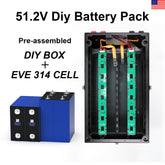

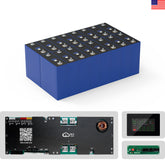

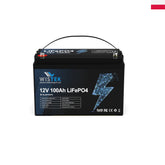
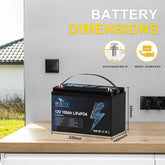
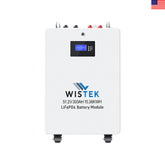
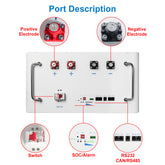
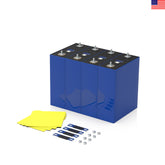
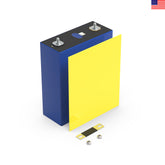
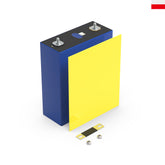

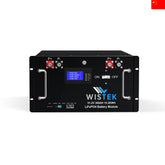
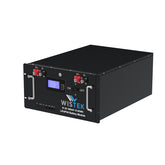
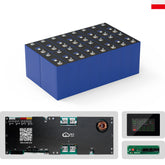








Leave a comment
All blog comments are checked prior to publishing